December 17, 2018 – The tour is now over and most everyone is sitting back in De Anza in Amado, AZ safe and sound. The last half was busy for sure, with many memories. Bob & Debbie dropped off in Mazatlan and Gary & Bev headed for Tuscon, AZ after they crossed the border. As you an imagine everyone has many plans around holiday season, some returning home, and others, like us heading to other destinations.

Following the tour of the Teotihuacan Pyramids and bus tour of Morelia in Michoacan the balance of the tour was about relaxing town, shopping, lots of fun, more adventure and of course driving as we extracted ourselves from deep within Mexico. We did have a few wrong turns along the way, resulting in some returnos. Sometimes we listened to Molly when we should not have, other times we should have listened, and we did not. Morelia was one such example, Molly was right and getting ourselves turned around a process to behold. Our drive to Patzcuaro was also exciting as half the Caravan took the “Libre” road with Mike & Kelly, and the other half took the “Cuota” road, led by Lisa & I. When we arrived, we met Jim & Myrna who we first met on Baja 15 years ago. No more bus for them they were now in a Truck Camper.

The Villa Patzcuaro Hotel & RV Park was a tight fit in and even tighter getting out. Chris had to back their 40’ 5th wheel out of the park onto the street with Bob’s truck and drop it. Then connect his truck, which he had already parked outside the campground. Add to this it was pouring with rain and we had cranky neighbours who did not like the street blocked. We did check out another park for next season, lots more room in the park however getting there could be quite a challenge. Lots of major shopping for the gang on our visit to Patzcuaro, including stops in Capula, Quiroga and Santa Clara de Cobra.

The Chimulco Water Park & RV Park in Villa Corona, Jalisco was a unique experience. It is all about the hot water pools, heated thermally from the earth at about 100F (38C). They empty and refill these every day, 3 very large pools and others when required. We met a very friendly couple from Delta who was very helpful. They are permanentes and have been in the park for years, we look forward to seeing them again and spending more time in the park and the region.

It was a wonderful drive from Villa Corona to Melaque on the coast, a real diversity of flora and geography. It became apparent as we were descending to the coast that the cool nights were over. We left Villa Corona at 12C and arrived in Melaque to 32C, hot and humid. Paul Beddows met us on the Hwy and escorted us in thru town, this did take some navigating. Lots of amenities in and around the Hotel & RV Park (Laguna del Tule), including a pool and swim up bar. Lisa & I drove next door to Barra de Navidad to see what that looks like after 33 years, yes many changes. We also had coffee with Linda & Kim, Linda & I worked together years ago at the TWU, they have been living in Mexico for over 15 years. It was good to see them both and get caught up on past events. We also visited Boca Beach, north of Melaque near the small village of La Mazanillo. Our next 45 day tour will stay here which is easy in and easy out, great beach which you can swim in and access to a pool. Laguna del Tule did not help itself by demanding a $100 USD deposit for the reservation in a park that was empty on arrival, then decline to credit us with the deposit or discount our stay as Wagon Masters.
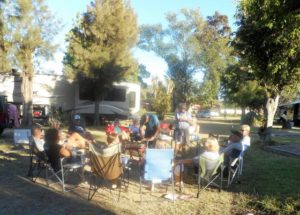
Next stop was the La Penita RV Resort, about an hour or so north of Puerto Vallarta in Narayit. We had never stayed here and no sense of what it was like, however anyone who had said we will like it. They were all correct, we loved it. Carole, the operator and fellow Canadian was very friendly as were the residents. A very different feel from Tlaqupaque Hotel & RV Park in Lo De Marcos down the Hwy. Very upscale, many expensive Class A Motorhome and predominately from Quebec. We approached them almost 16 months ago and they would not commit to reservations, when we arrived to look around, they had at least 20-30 sites open. We are glad we ended up at La Penita. In fact, Lisa & I and Mike & Kelly are heading back to La Penita for January & February, sound like our friends Rafael & Eileen from South Surrey may be joining us. Unfortunately, the day we headed north I became violently ill (suspected food poising from rancid peanuts). Mike & Kelly took over the lead and we caught back up at the El Mirador Restaurant & RV Campground for our hosted farewell dinner and 2 days on the beach.

Day 44 we head off to the Hotel Cortez and RV Park in Guaymas, Sonora for a 2 night stay. They were organizing for a wedding on arrival and the party went late into the night, sounded like fun!
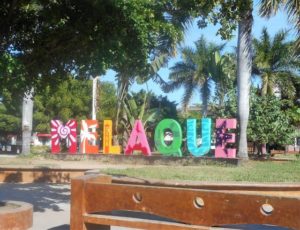 The next day another wedding and another evening of party time as expected. Our neighbours from Los Barriles, Brits Tony & Kathy showed up, they had heard that we were in town as they were staying at the Totonaka RV Park in San Carlos. Mike & Kelly, Lisa & I and Tony & Cathy headed over to the Playa Cortez Restaurant/Bar for a beverage and a bite. Later the gang organized a last Happy Hour and we celebrated Gary & Bev’s 47th Wedding Anniversary. Sunday were off at 8:00 AM headed back to the US. After turning in the TIPs we arrived at the border lineup by 4:00 PM (Good Job Mike & Kelly who led us thru Nogales). Unfortunately, because of a stalled truck, traffic blocking the RV lane and inspection plus it took over 2 hours to clear 8 RV thru US Customs.
The next day another wedding and another evening of party time as expected. Our neighbours from Los Barriles, Brits Tony & Kathy showed up, they had heard that we were in town as they were staying at the Totonaka RV Park in San Carlos. Mike & Kelly, Lisa & I and Tony & Cathy headed over to the Playa Cortez Restaurant/Bar for a beverage and a bite. Later the gang organized a last Happy Hour and we celebrated Gary & Bev’s 47th Wedding Anniversary. Sunday were off at 8:00 AM headed back to the US. After turning in the TIPs we arrived at the border lineup by 4:00 PM (Good Job Mike & Kelly who led us thru Nogales). Unfortunately, because of a stalled truck, traffic blocking the RV lane and inspection plus it took over 2 hours to clear 8 RV thru US Customs.

Congratulations everyone for participating in the 1st ever Baja Amigos Mexico 45 Day Tour!

Did you know?
Álvaro Obregón Salido (February 19, 1880 – July 17, 1928) was born in Siquisiva, Sonora and grew up in Huatabampo. Obregón left farming and entered politics in 1911, elected as municipal president of Huatabampo. Obregón expressed little sympathy for the Anti-re-electionist movement launched by Francisco I. Madero in 1908–1909 in opposition to President Porfirio Díaz. However Obregón became a supporter of Madero shortly after Madero became President of Mexico in November 1911.

In March 1912, Pascual Orozco, a general who had fought with Madero earlier, now launched a revolt against Madero’s regime in Chihuahua. In April 1912, Obregón volunteered to join the local Maderista forces, the Fourth Irregular Battalion of Sonora, organized under the command of General Sanginés to oppose Orozco’s revolt. This Battalion supported federal troops under the command of Victoriano Huerta sent by Madero to crush Orozco’s rebellion. Within weeks of joining the Battalion, Obregón displayed signs of military genius. Obregón disobeyed his superior’s orders but won several battles by luring his enemy into traps, surprise assaults, and encircling maneuvers. Obregón was quickly promoted through the ranks and attained the rank of Colonel before resigning in December 1912, following victory over Orozco (with Orozco fleeing to the United States).

Obregón had intended to return to civilian life in December 1912, but then in February 1913, the Madero regime was overthrown in a coup d’état (known to Mexican history as La decena trágica) orchestrated by Victoriano Huerta, Félix Díaz, Bernardo Reyes, and Henry Lane Wilson, the United States Ambassador to Mexico. After Madero and others were shot, Huerta assumed the presidency. The Sonoran government refused to recognize the Huerta regime, and in early March 1913, Obregón was appointed chief of Sonora’s War Department. As commander of Sonora’s forces, Obregón won the respect of many revolutionaries who had fought under Madero in 1910–11, most notably Benjamín G. Hill.

A Sonoran delegation then met the Governor of Coahuila, Venustiano Carranza. The Sonoran government signed on to Carranza’s Plan of Guadalupe, by which Carranza became “primer jefe” of the newly proclaimed Constitutional Army. On 30 September 1913, Carranza appointed Obregón commander-in-chief of the Constitutional Army in the Northwest, with jurisdiction over Sonora, Sinaloa, Durango, Chihuahua, and Baja California. In early July 2014, Obregón moved south to Orendaín, Jalisco, where his troops defeated federal troops, leaving 8000 dead, and making it clear that the Huerta regime was defeated.

Obregón was then promoted to major general and arrival in Teoloyucan on 11 August, on the mudguard of a car, Obregón signed the treaties that ended the Huerta regime. On 16 August 1914, Obregón and 18,000 of his troops marched triumphantly into Mexico City where he was by Carranza on 20 August. Unfortunately tensions between Carranza and Pancho Villa had risen throughout 1914, as Villa created a number of diplomatic incidents that Carranza was worried would invite outside intervention in the Mexican Revolution. Hence Carranza refused to let Villa march into Mexico City in August.
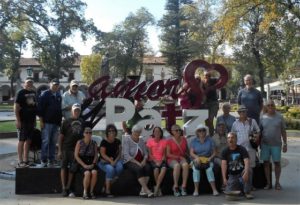
Prior to that on July 8, 1914, Villistas and Carrancistas had signed the Treaty of Torreón, in which they agreed that after Huerta’s forces were defeated, 150 generals of the Revolution would meet to determine the future shape of the country. In September, Villa and Carranza formally split and Obregón paid a visit to Villa in an attempt to make peace that nearly resulted in Villa’s having Obregón shot. The Convention agreed to in the Treaty of Torreón went ahead at Aguascalientes on 5 October 1914. Carranza did not participate in the Convention of Aguascalientes because he was not a general, but, General Obregón did. The Convention soon split into two major factions: (1) the Carrancistas, who insisted that the Convention should follow the promise of the Plan of Guadalupe and restore the 1857 Constitution of Mexico; and (2) the Villistas, who sought more wide-ranging social reforms than set out in the Plan of Guadalupe. The Villistas were supported by Emiliano Zapata, leader of the Liberation Army of the South, who had issued his own Plan of Ayala, which called for wide-ranging social reforms. For 6 weeks, Obregón maintained neutrality between the two sides, and tried to reach a middle ground that would avoid a civil war.

Ultimately Gutiérrez was appointed provisional President of Mexico by the Convention of Aguascalientes, which Venustiano Carranza found unacceptable. Forced to choose sides, Obregón naturally sided with Carranza and left the Convention to fight for the Primer Jefe. Obregón had many friends amongst the Villistas and Zapatistas at the Convention and was able to convince some of them to depart with him. Obregón’s forces easily defeated Zapatista forces at Puebla in early 1915. However, the Villistas remained in control of large portions of the country. Forces under Pancho Villa were moving towards the Bajío; Felipe Ángeles’ forces occupied Saltillo and thus dominated the northeast; the forces of Calixto Contreras and Rodolfo Fierro controlled western Mexico; and forces under Tomás Urbina were active in Tamaulipas and San Luis Potosí.

The armies of Obregón and Villa clashed in four battles, collectively known as the Battle of Celaya, the largest military confrontation in Latin American history before the Falklands War of 1982. Villa was defeated by Obregón in all, who lost his right arm in the 3rd and definitive battle. The arm was subsequently embalmed and then put in the monument to Obregón on the site of where he was assassinated in 1928.

In May 1915, Carranza had proclaimed himself the head of what he termed a “Pre-constitutional Regime” that would govern Mexico until a constitutional convention could be held. Carranza appointed Obregón as Minister of War in his new cabinet. Obregón was determined to modernize and professionalize the Mexican military thoroughly and in the process, founded a staff college and a school of military medicine. He also founded the Department of Aviation and a school to train pilots. In September 1916, Carranza convoked a Constitutional Convention, to be held in Querétaro, Querétaro.

During the Constitutional Convention in December 1916, Obregón broke with Carranza and threw his considerable weight behind those supporting land reform and anti clerical initiatives. Shortly after swearing his allegiance to the new Constitution, Obregón resigned as Minister of War and retired to Huatabampo to resume his life as a chickpea farmer. As the victorious general of the Mexican Revolution, Obregón remained enormously popular throughout the country.

By early 1919, Obregón had determined to use his immense popularity to run in the presidential election that would be held in 1920. Carranza then announced he would not run for president in 1920, but refused to endorse Obregón, instead endorsing an obscure diplomat, Ignacio Bonillas. Obregón formally announced his candidacy in June 1919 and began to campaign in earnest in November 1919.

In the meantime, Carranza seemed determined to stop Obregón. At Carranza’s behest, the Senate stripped Obregón of his military rank, a move which only increased Obregón’s popularity. Then, Carranza ochestrated a plot in which a minor officer claimed that Obregón was planning an armed uprising against the Carranza regime. Obregón was forced to disguise himself as a railwayman and flee to Guerrero, where one of his former subordinates, Fortunato Maycotte, was governor. When the election was held, Bonillas defeated Obregón.

On 20 April 1920, Obregón issued a declaration accusing Carranza of having used public money in support of Bonillas’s presidential candidacy. He declared his allegiance to the Governor of Sonora, Adolfo de la Huerta, in revolution against the Carranza regime. On 23 April, the Sonorans issued the Plan of Agua Prieta, which triggered a military revolt against the president. Obregón’s Sonoran forces were augmented by troops under General Benjamín G. Hill and the Zapatistas led by Gildardo Magaña and Genovevo de la O. The revolt was successful and Carranza was deposed. On 20 May 1920, Carranza was killed in the state of Puebla in an ambush led by General Rodolfo Herrero as he fled from Mexico City to Veracruz on horseback.
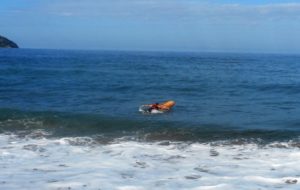
For six months, from 1 June 1920 to 1 December 1920, Adolfo de la Huerta served as provisional president of Mexico until elections could be held. When Obregón was declared the victor, de la Huerta stepped down and assumed the position of Secretary of the Treasury in the new government.
Álvaro Obregón Salido – President of Mexico, 1920–1924 Obregón’s election as president essentially signaled the end of the violence of the Mexican Revolution. The death of Lucio Blanco in 1922 and the assassination of Pancho Villa in 1923 would eliminate the last remaining obvious challenges to Obregón’s regime. Obregón appointed José Vasconcelos (Rector of the National Autonomous University of Mexico who had been in exile 1915–1920 because of his opposition to Carranza) as his Secretary of Public Education. Vasconcelos undertook a major effort to construct new schools across the country. Around 1,000 rural schools and 2,000 public libraries were built.

Vasconcelos was also interested in promoting artistic developments that created a narrative of Mexico’s history and the Mexican Revolution. Obregón’s time as president saw the beginning of the art movement of Mexican muralism, with artists such as Diego Rivera, David Alfaro Siqueiros, José Clemente Orozco, and Roberto Montenegro invited to create murals expressive of the spirit of the Mexican Revolution on the walls of public buildings throughout Mexico.

Obregón also sought to shape public perceptions of the Revolution and its place in history by staging elaborate celebrations in 1921 on the centenary of Mexico’s independence from Spain. There had been such celebrations in 1910 by the Díaz regime, commemorating the start of the insurgency by Miguel Hidalgo. The political fact of independence was achieved by former royalist officer Agustín de Iturbide, who was more celebrated by conservatives in post-independence Mexico than liberals. However, 1921 provided a date for Obregon’s government to shape historical memory of independence and the Revolution.

After a decade of violence during the Revolution, the centennial celebrations provided an opportunity for Mexicans to reflect on their history and identity, as well as to enjoy diversions in peacetime. For Obregón, the centennial was a way to emphasize that revolutionary initiatives had historical roots and that like independence, the Revolution presented new opportunities for Mexicans. Land reform was far more extensive under Obregón than it had been under Carranza. Obregón enforced the constitutional land redistribution provisions, and in total, 921,627 hectares of land were distributed during his presidency.

As president, one of Obregón’s top priorities was securing US diplomatic recognition of his regime, to resume normal Mexico–United States relations. Although he rejected the U.S. demand that Mexico rescind Article 27 of the constitution, Obregón negotiated a major agreement with the United States, the Bucareli Treaty of August 1923 that made some concessions to the US in order to gain diplomatic recognition. It was particularly helpful when the Mexican Supreme Court, in a case brought by Texas Oil, declared that Article 27 did not apply retroactively. Another important arena in which Obregón resolved issues with the U.S. and other foreign governments was the Mexican-United States General Claims Commission. Finance Minister Adolfo de la Huerta signed a deal in which Mexico recognized a debt of $1.451 million to international bankers. Finally, at the Bucareli Conference, Obregón agreed to an American demand that Mexico would not expropriate any foreign oil companies, and in exchange, the U.S. recognized his government. Many Mexicans criticized Obregón as a sellout (entreguista), including Adolfo de la Huerta for his actions at the Bucareli Conference.
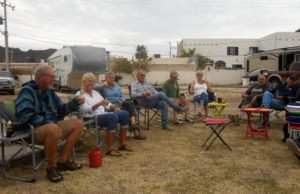
In 1923, Obregón endorsed Plutarco Elías Calles for president in the 1924 election (in which Obregón was not eligible to run). Finance Minister Adolfo de la Huerta (1881–1955) who had served as interim president in 1920, before stepping aside in favor of Obregón, believed that he deserved to be the next president and that Obregón was repeating Carranza’s mistake of imposing his own candidate on the country. De la Huerta therefore accepted the nomination of the Cooperativist Party to be its candidate in the presidential elections. De la Huerta then organized an uprising against Obregón. Over half of the army joined De la Huerta’s rebellion, with many of Obregón’s former comrades in arms now turning on him. Rebel forces massed in Veracruz and Jalisco.
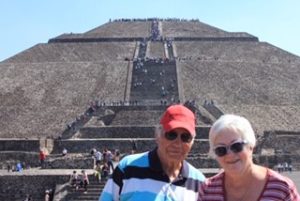
In a decisive battle at Ocotlán, Jalisco, Obregón’s forces crushed the rebel forces. Diplomatic recognition by the United States following the signing of the 1923 Bucareli Treaty was significant in Obregón’s victory over rebels. The U.S. supplied Obregón arms, but also aided him by sending 17 U.S. planes that bombed rebels in Jalisco. Obregón hunted down many of his former friends and had them executed. Following the crushing of the rebellion, Calles was elected president of Mexico and Obregón stepped down from office.

Obregón remained in close contact with President Calles, whom he had installed as his successor, and was a frequent guest of Calles at Chapultepec Castle. This prompted fears that Obregón was intending to follow in the footsteps of Porfirio Díaz and that Calles was merely a puppet figure, the equivalent of Manuel González. These fears became acute in October 1926, when the Mexican Congress repealed term limits, thus clearing the way for Obregón to run for president in 1928. Obregón returned to the battlefield for the period October 1926 to April 1927 to put down a rebellion led by the Yaqui people. This was somewhat ironic because Obregón had first risen to military prominence commanding Yaqui troops, to whom he promised land, and the 1926–27 Yaqui rebellion was a demand for land reform.

Obregón formally began his presidential campaign in May 1927. Two of Obregón’s oldest allies, General Arnulfo R. Gómez and General Francisco “Pancho” Serrano, opposed his re-election. Serrano launched an anti-Obregón rebellion and was ultimately assassinated. Gómez later called for an insurrection against Obregón but was soon killed as well. Obregón won the 1928 Mexican presidential election, but months before assuming the presidency he was assassinated. Calles’s harsh treatment of Roman Catholics had led to a rebellion known as the Cristero War, which broke out in 1926. As an ally of Calles, Obregón was hated by Catholics and was assassinated in La Bombilla Café on July 17, 1928, shortly after his return to Mexico City, by José de León Toral, a Roman Catholic opposed to the government’s policies on religious matters.
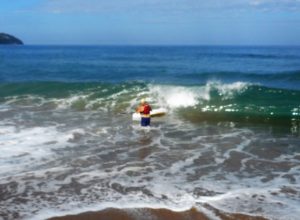
Although Obregón was a gifted military strategist during the Revolution and decisively defeated Pancho Villa’s Division of the North at the Battle of Celaya and went on to become President of Mexico, his posthumous name recognition and standing as a hero of the Revolution is nowhere near that of Villa’s or Emiliano Zapata’s. His assassination in 1928 before he could take the presidential office created a major political crisis in Mexico, which was solved by the creation of the National Revolutionary Party by his fellow Sonoran, General and former President Plutarco Elías Calles.

An imposing monument to Álvaro Obregón is located in the Parque de la Bombilla, Avenida Miguel Ángel de Quevedo at Insurgentes, San Ángel, Mexico City. The monument to Obregón is the largest to a single revolutionary. Obregón’s body after his 1928 assassination is buried in Huatabampo, Sonora.


